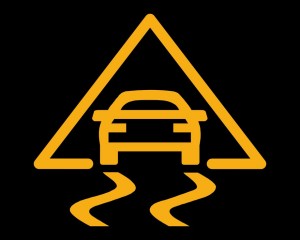New NZ Import Rules – Electronic Stability Control
Importers in New Zealand, take note: New rules are being phased in which will change the way you will buy vehicles. So what are these new rules, and will they affect you?
First of all, these rules are being gradually implemented. This is different to past changes in NZ vehicle import rules, which resulted in all vehicles over a certain age suddenly being ineligible.
Secondly, the additional criterion is not going to be as easy to spot as the emissions code changes of the past have been. It is easy enough to tell whether a car has a 2-digit emissions code (like UA) or a 3-digit code (such as DBA), but for the new rules, it will be the presence or absence of Electronic Stability Control that is the determining factor.
The schedule for used vehicle imports is like this:
- Used class MC vehicles (four-wheel-drive SUVs and off-road vehicles) inspected at the border from 1 March 2016.
- Used class MA vehicles (passenger cars) with engine capacity greater than 2 liters inspected at the border from 1 March 2018.
- All other used class MA, MB and NA light passenger and goods vehicles inspected at the border from 1 March 2020.
So, first up will be what they are calling MC vehicles. The definition of what constitutes an MC vehicle seems rather vague. After all, there are all sorts of vehicles that seem to be in a gray area between the SUV and regular passenger car classification. The technical definition is here, but is so detailed that I think it is best to err on the side of caution and just assume any vehicles with serious offroad intentions are covered. For example, a Subaru Forester does not seem to be your typical SUV, and yet it does appear on this list with other SUVs.
MC class vehicles will be inspected “at the border” (which we assume is upon landing in NZ, rather than the NZTA inspection on the Japan side) from March 1, 2016. If you are thinking of buying a non-compliant SUV, then you really need to get this done as quickly as possible, as you don’t want to find that pressure on shipping means your vehicle does not make the March 1 deadline.
The next question is how you are going to be able to find these cars? There are so many different variations for what NZ is calling Electronic Stability Control, but since this feature is so rarely mentioned on Japanese car auction inspection reports, how will you be able to tell if this crucial feature is present or not?
In our opinion, the best method is going to be for us to contact the manufacturer with the chassis number to ask them directly. We recommend that customers get bids in a day early so that we have time to get this information. Of course, many earlier 4WD SUV models that have compliant emissions codes will no longer be eligible for import, so we recommend customers do not look at 4WD SUVs from before 2011.
(An interesting loophole is that this only applies to 4WD SUVs. This means that 2WD SUVs are not affected, so if your customer isn’t a farmer, it may be worth trying to persuade him or her to go for the same vehicle in 2WD format.)
The next tranche of vehicles after the MC class will be the MA class vehicles, which are any kind of passenger cars with engines over 2 liters. This rule comes into play on March 1, 2018. Again, there is an interesting opportunity to find loopholes here. Remember that cars that are broadly classified as 2 liter cars often have a capacity that is just under 2 liters. Cars like the 4th generation Toyota Prius that has a capacity of 1797 cc may well find a bump in popularity as a result.
Once we get to March 1, 2020, the loopholes will close, and these requirements will apply to all vehicles. However, I expect by that time most of the used cars of an age that customers in New Zealand would be interested in will have this feature as standard anyway.
As a final comment, I would like to note my frustration as an exporter and the frustration of NZ importers. This rule is not transparent or easy to comply with. The emissions code rules of the past have been simple to verify, but the presence or absence of ESC is not. A much fairer and simpler rule update would have been to move forward the date for the earliest vehicles to, say 2010. Moving this date forward for all vehicles at the same time would have had a similar net benefit in terms of enhanced safety systems (not just ESC, but also airbags, pre-crash braking etc), but would be much easier to implement.
One can only be suspicious that the complexity of the new rules has more to do with hindering the effectiveness of the import industry to protect the players in the new car sales business, than it does with actually improving safety. After all, if safety was the real concern, how come 2WD SUV variants (that surely have a higher center of gravity than their 4WD equivalents) are exempt until 2018, even though they are actually as or more prone to roll over in “moose test” scenarios.
References:
Please note:
We do our best to keep abreast of all the changes in the import rules for the countries we send vehicles to. However, at the end of the day it is your responsibility as the importer on the ground in your country to make sure you understand and comply with these rules. If you tell us to buy a car and send it to you, we will.



